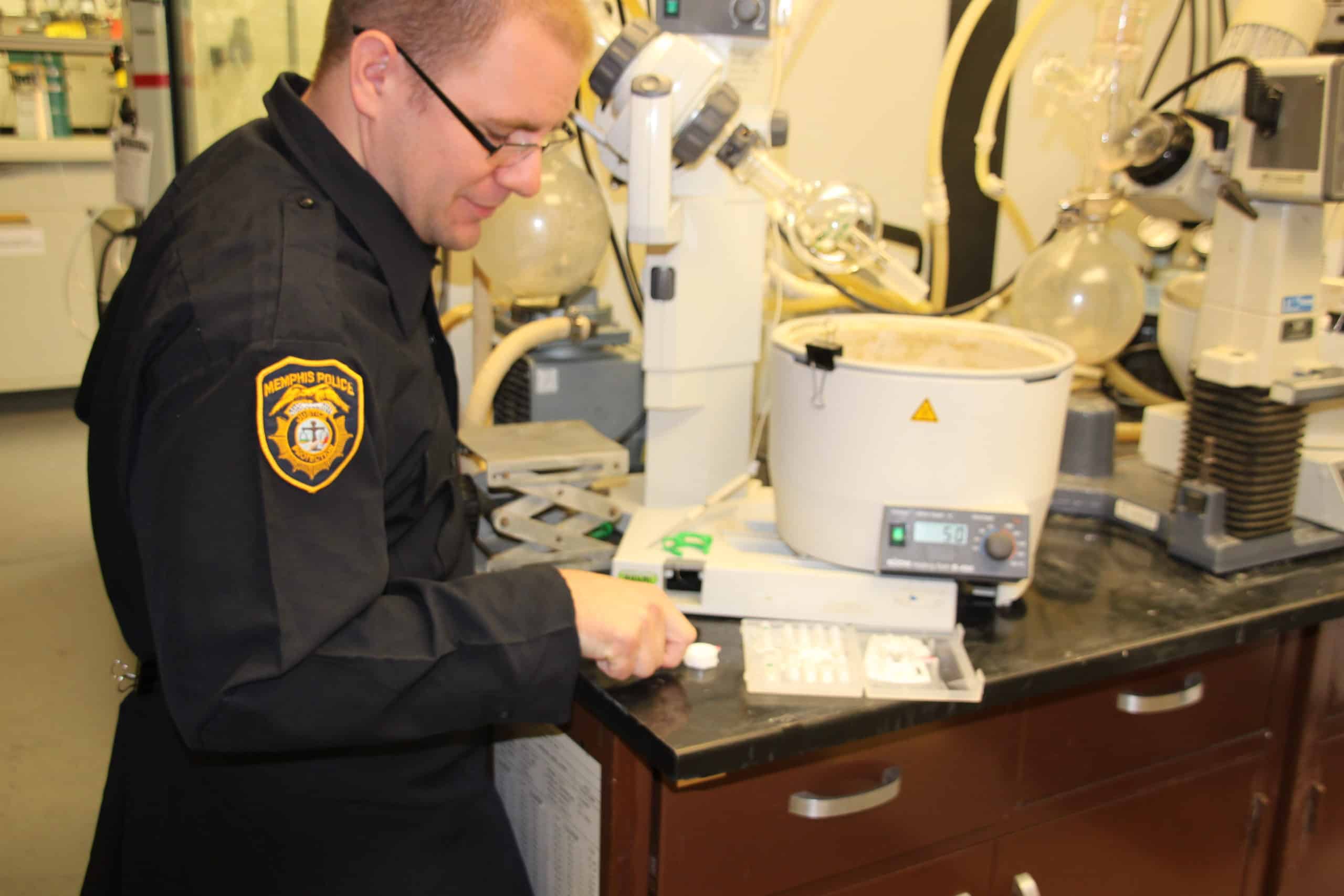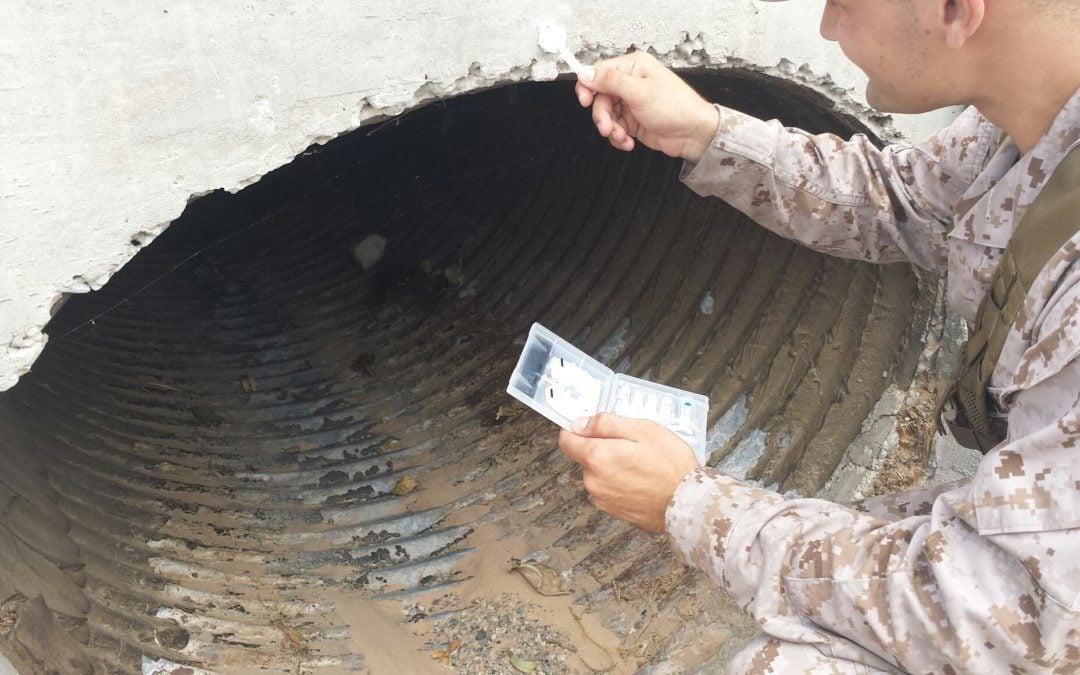“If it ain’t broke, don’t fix it”. Absolutely, we all want the newest and greatest widget but sometimes those tried and true methods are still best. Colorimetric explosive detection is a great example. Many of the colorimetric explosive detection kits in use today employ colorimetric chemistries that have been known for over a hundred years. The opportunity for improvement has occurred in designing a better form fact, but keeping what works.
Modern colorimetric detection technology dates back to ancient times as early as the 1st century. The earliest record of a colorimetric reaction was given by Plinius Secundus, a philosopher and Roman Empire Commander, who used gallnut extract to detect the presence of iron in hydrated copper acetate. The growing dye and pigment industry in the late 19th century spurred the development of modern colorimetric detection technologies, many of which serve critical roles in analytical laboratories today.
So, how do colorimetric detection chemistries work? Color originates from the complex and fascinating interaction of visible light with chromophores (color changing material), or groups of atoms in molecules which are capable of absorbing certain wavelengths of visible light. Due to this absorption phenomenon, these substances are perceived as having color. The hue and depth of the perceived color are related to the specific wavelengths absorbed and the absorption efficiency of the molecule, respectively. The alteration of electron density distribution in a molecule through reaction with another chemical forms the basis for colorimetric chemical detection.
In order to be effective, field based colorimetric chemistry detection technologies must react with the chemical of interest resulting in a change in the absorption characteristics, but that’s only one part of the equation. Several other factors, as described below, are involved in the development of colorimetric chemistries suitable for real-world field applications.
Sampling rate is related to the effective surface area of the sensor materials. The greater the physical surface area and dispersion of reactive chromophore, the more rapid capture and reaction of the explosive material and thus rapid colorimetric reaction. A large physical surface area with well-dispersed reactive chromophores allows optimum conditions for fast response time.
Ideally, the colorimetric chemistry will react with the specific chemical/explosive of interest without reacting with other chemicals (interferents) also present. Interferents are other chemicals present in the environment which react with the colorimetric chemistry to give the appearance that the chemical/explosive of interest is present (a false positive response), or on the other hand, that chemically destroys the ability of the colorimetric chemistry to react with the chemical/explosive of interest (a false negative response). Careful formulation of the colorimetric chemistry is required to minimize the impact of interferents.
Long shelf life and service life under harsh environmental conditions is critical for a product designed for use in the field. Major environmental parameters which affect the life and performance of colorimetric detection sensors include temperature, humidity, and light (indoor and outdoor). Formulation efforts need to be optimized to “build out” the effects of these real environmental stresses.
COLORIMETRIC CHEMISTRY IN EXPLOSIVE DETECTION
Explosive Detection, in general, was not a priority until the rise of terrorist activity with the events in the United Kingdom by the Irish Republican Army, the Palestinian attacks in Israel, the attacks in Russia by the Chechen terrorists and more recently the attacks in the US, or directed toward the US, as in the case of the US Marine Barrack attack in Lebanon. In 1983, after a terrorist attack brought down the Pan Am flight over Lockerbie UK, Congress passed the Aviation Security Improvement Act which specifically states, “an evaluation of deployment of explosive detection devices” to be performed annually and provided in the Annual Aviation Security Report.
Explosives remain the weapon of choice for terrorists around the world. Improvised Explosive Devices (IEDs) are a threat from international terrorist organizations, as mentioned above, and local, home grown terrorists as well. Sadly, Home Made Explosives (HMEs) and IEDs have become a fact of modern life. Military, law enforcement and intelligence personnel have a dual role; uncovering the bomb networks and systems before the bombers do harm, and investigating an incident after it occurs.
Representative Explosive Materials and Precursors
| HME Class | Representative Chemicals |
| Nitroaromatics | TNT, DNT, Tetryl, picric acid |
| Nitramines & Nitrate Esters | RDX, HMX, PETN, EGDN, nitroglycerin |
| Inorganic Nitrates | urea nitrate, ammonium nitrate, black powder |
| Chlorates & Bromates | potassium chlorate, potassium bromate |
| Peroxides | TATP, HMTD |
| Precursor Class | Representative Chemicals |
| Acids | nitric acid, sulfuric acid, citric acid, hydrochloric acid |
| Bases | potassium hydroxide, sodium hydroxide |
Colorimetric chemistry is widely used in the detection of explosive materials. Traditional portable electronic explosive detection devices require a great deal of specialized training, a large budget and regular maintenance. While there is no dispute that there is a need for these electronic portable trace explosive detectors and larger explosive trace detection systems, there is a growing demand for colorimetric explosive trace detection kits for use in the field. A number of these kits have existed for some time; however, they often require the user to mix chemicals, perform serial analysis, conduct multiple swabs or tests, and then use a chart to interpret the results. Most existing explosive trace detection kits are difficult to use, especially in stressful situations. Even worse, many explosive trace detection kits can expose the user to dangerous chemicals and expose the kits to contamination from the environment or the user, leading to unreliable results. Some colorimetric explosive detection kits can only be use for bulk detection; however, explosive trace detection is critical in many real world applications.

Real World Applications of Colorimetric Explosive Detection Kit
- Military personnel use colorimetric explosive detection kits for sensitive site exploitation to determine who and what the threats are. Colorimetric explosive detection kits provide quick and reliable results of the presence of explosive materials.
- Law Enforcement officers often need presumptive tests to identify the presence of explosive materials and their precursors. Bulky and expensive electronic explosive detectors can be impractical for field use.
- Intelligence officials use colorimetric explosive detection kits to detect the presence of explosive materials and their precursors in real-time. A colorimetric explosive detection kit with a single swab that provides results of multiple explosive threats is ideal for this application.
The one common variable among the real world applications listed above is the ability of the test to be performed outside of a laboratory. Colorimetric explosive detection kits are utilized when a rapid on-site diagnostic detection of explosive materials is needed. With that said, these kits are often used to test a suspect’s hands and equipment, in post blast sites, or in border stations, sea ports and airports. Typically these tests are performed by non-technical individuals, therefore, the explosive detection kits must be easy to use, rugged for use under extreme environmental conditions and easy to interpret.
Under contract with the Department of Defense (DoD), Morphix Technologies developed the TraceX Explosive Detection kit. In early product development discussions with the DoD, the primary focus of the development effort was designed toward a concept that would allow the end user to take a single sample of the material and determine if it contained explosive materials or precursors. The end user wanted a device that was simple to use, required very little training, allowed quick analysis of the sample and provided clear non-ambiguous results.
The TraceX explosives detection kit is simple to use and low cost. It is an explosive detector that can be used by military personnel, law enforcement and intelligence officials. With a single swab, the TraceX explosive detection kit detects all the major families of explosive materials and their precursors. The TraceX’s simple color change alert system provides a single color indication of the presence of a particular family of explosive material. No serial testing is required and there is no interpretation of the results.
As the burden of greater threats and reduced resources falls on our military, law enforcement and intelligence communities, it becomes even more essential that they have tools that allow them to achieve their missions quickly and effectively. The use of colorimetric chemistry is an ideal solution.
